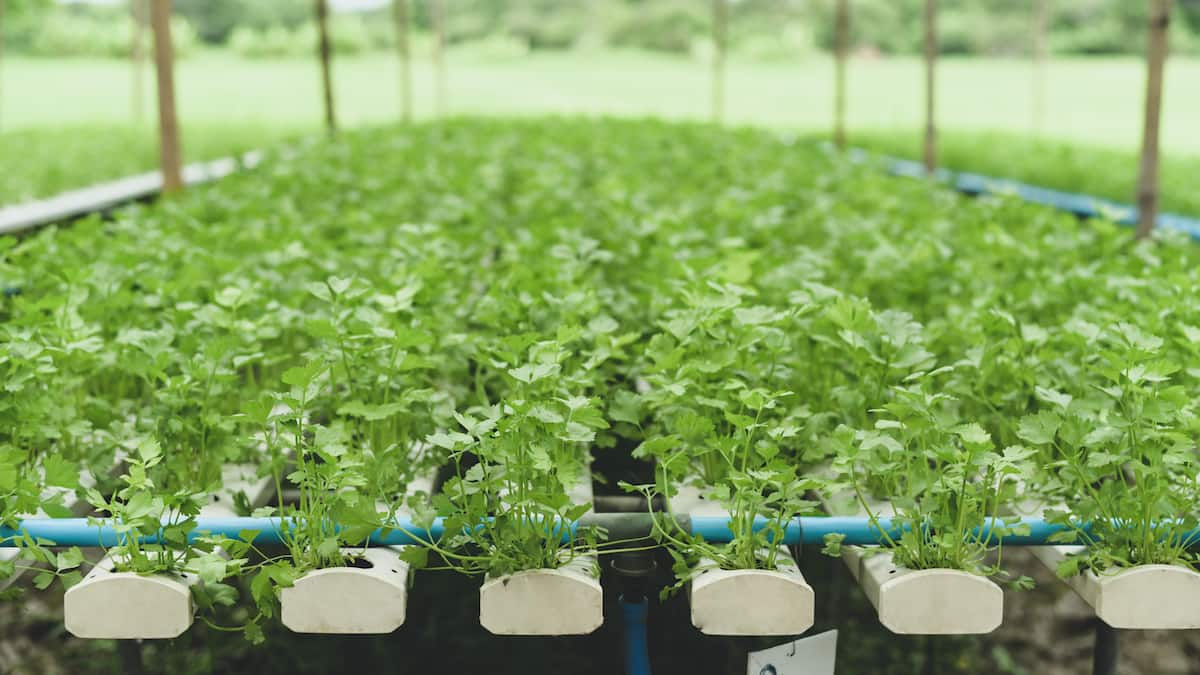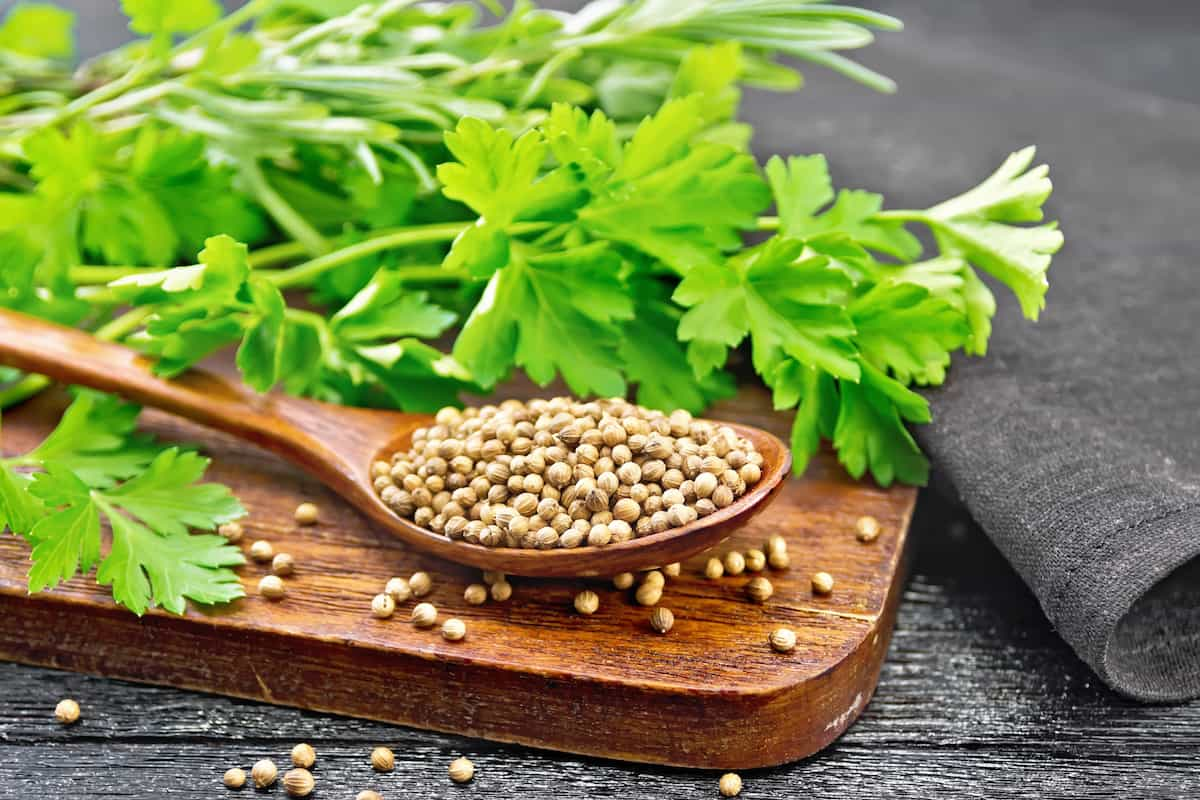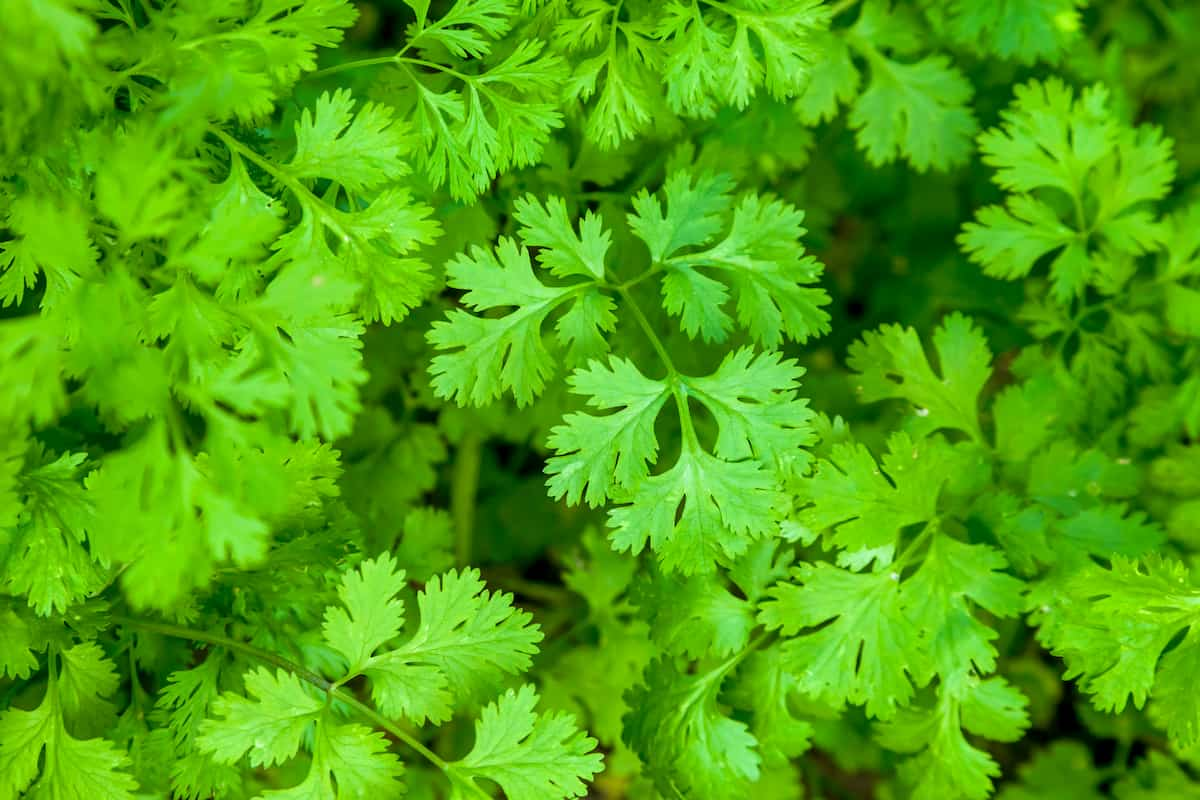The growing popularity of hydroponics, a soilless agricultural system, has revolutionized the way we cultivate various crops. This technique allows for faster growth, higher yields, and better control over growing conditions. One of the most popular herbs grown using hydroponics is coriander, also known as cilantro. Below we learn about growing coriander in NFT systems, hydroponic coriander nutrients, hydroponic coriander fertilizer requirements, and key rules to start hydroponic coriander farming from scratch.

Hydroponic Coriander/Cilantro Farming in a Greenhouse
Greenhouse Selection and Design
- Size: Determine your available space and the scale of your hydroponic cilantro production. You can start small and expand as you gain experience and confidence.
- Material: Greenhouses can be constructed from various materials, including glass, polycarbonate, and polyethylene film. Each has advantages and disadvantages, so choose according to your budget and requirements.
- Climate control: Invest in a greenhouse that allows you to regulate temperature, humidity, and light to optimize cilantro growth.
Hydroponic System Selection
- Nutrient Film Technique (NFT): In this method, a fertiliser solution flows over the roots of the plants all the time. It’s ideal for growing cilantro because it provides excellent aeration and requires minimal space.
- Deep Water Culture (DWC): DWC submerges plant roots in nutrient-rich water, allowing for efficient nutrient uptake. This system is low-maintenance and suitable for growing herbs like cilantro.
Seed Selection and Germination
- To make the shell weak, soak the seeds in water for a whole day.
- Put the seeds in a tray with something that will help them grow, like coconut coir or perlite. Keep the tray in a warm, dark place where the temperature is between 65 and 75°F (18 and 24°C).
- Monitor the moisture levels and ensure the growing medium remains damp but not soaked. Germination should occur within 7-10 days.
In case you missed it: Frequently Asked Questions About Coriander/Cilantro Farming

Transplanting Seedlings
- Carefully lift the seedlings out of the growth medium, taking extra precautions to protect the young plants’ tender roots.
- Place each seedling in a net pot filled with a suitable hydroponic medium, such as expanded clay pellets or coconut coir.
- Position the net pots in your hydroponic system, ensuring the roots contact the nutrient solution.
Nutrient Solution and pH Management
Cilantro requires specific nutrients for healthy growth. Use a pre-formulated hydroponic nutrient solution with a balanced N-P-K ratio, such as 10-5-14. Maintain the pH of the nutrient solution between 6.0 and 6.5 to facilitate optimal nutrient uptake. Regularly monitor the pH and adjust it using pH up or down solutions. Also, routinely replace the nutrient solution to prevent nutrient imbalances.
Temperature and Humidity Control
Cilantro thrives in moderate temperatures and humidity levels. Maintain daytime temperatures between 65-75°F (18-24°C) and nighttime temperatures between 55-65°F (13-18°C). Aim for a 50-70% humidity level to prevent diseases and encourage healthy growth. Use heaters or cooling systems to regulate temperature and humidifiers or dehumidifiers to control humidity.
Lighting
Cilantro requires ample light to grow properly. In a greenhouse, natural sunlight is the primary light source, but supplemental lighting may be needed, especially during winter or in regions with less sunlight. Use full-spectrum LED grow lights to provide the necessary light intensity for cilantro growth. Ensure your cilantro plants receive 12-14 hours of light per day.
Pruning and Harvesting
Regular pruning of cilantro plants encourages bushier growth and prevents leggy, weak stems. Remove any yellow or diseased leaves promptly to maintain plant health. To harvest cilantro, cut the outer leaves near the base of the plant, leaving the central stem intact. This will allow the plant to grow and produce new leaves for future harvests.
Pest and Disease Management
In a hydroponic system, the risk of pests and diseases is reduced but not eliminated. Regularly inspect your cilantro plants for signs of infestation or disease. Implement integrated pest management (IPM) practices to control pests, such as introducing beneficial insects or using organic insecticides. To prevent diseases, maintain proper environmental conditions and sanitize your hydroponic system regularly.
In case you missed it: Frequently Asked Questions About Basil Farming

Record Keeping and Continuous Improvement
Maintaining records of your hydroponic cilantro farming operation is essential for identifying patterns, assessing performance, and implementing improvements. Keep track of variables such as nutrient solution composition, pH, temperature, humidity, and harvest yields. Analyze this data to optimize your cilantro production and maximize your return on investment.
Marketing and Selling Your Produce
To generate revenue from your hydroponic cilantro farm, develop a marketing and sales strategy that targets potential customers. Consider the following approaches to selling your produce:
- Farmers’ markets: Participate in local farmers’ markets to sell your fresh cilantro directly to consumers. This approach allows you to set competitive prices and helps build a loyal customer base.
- Grocery stores and supermarkets: Establish partnerships with local grocery stores or supermarkets that value high-quality, locally-grown produce. Offer your hydroponic cilantro as a premium product to these businesses.
- Restaurants and caterers: Collaborate with local restaurants, cafes, or catering services that use fresh herbs in their dishes. Provide samples of your cilantro to showcase its quality and negotiate supply agreements.
- Online sales: Create an online presence for your hydroponic cilantro farm through a website or social media platforms. Offer your produce for sale and arrange for local delivery or pickup options.
Training and Education
Before starting your hydroponic cilantro farming venture, learn about the various aspects of hydroponics, greenhouse management, and cilantro cultivation. Participate in workshops and online courses, or attend seminars to gain practical knowledge and stay up-to-date with the latest technologies and methods. Networking with experienced hydroponic farmers can also provide valuable insights and guidance.
Conclusion
Hydroponic cilantro farming in a greenhouse offers numerous advantages, including better control over environmental conditions, higher yields, and faster growth. Following this article’s key rules, you can start a hydroponic coriander/cilantro farm from scratch. With dedication, continuous learning, and improvement, you’ll be on your way to producing fresh, high-quality cilantro all year round.
- Feed Your Flock for Less: Top 10 Tips to Save on Chicken Feed
- Ultimate Guide to Ossabaw Island Hog: Breeding, Raising, Diet, and Care
- Hatching Answers: The Top 10 Reasons Your Chickens Aren’t Laying Eggs
- Eggs and Economics: Breaking Down the Cost of Raising Backyard Chickens
- Defend Your Greens: Proven Methods to Keep Iguanas Out of Your Garden
- Ultimate Guide to Cinnamon Queen Chicken: A Comprehensive Guide for Beginners
- Ultimate Guide to California Tan Chicken: Breeding, Raising, Diet, Egg-Production and Care
- Ultimate Guide to Marsh Daisy Chicken: Breeding, Raising, Diet, and Care
- 10 Types of Chicken Farming Businesses You Can Start for Profits